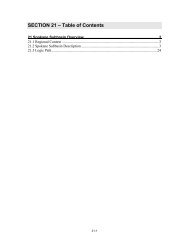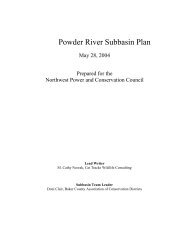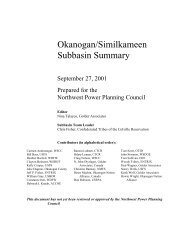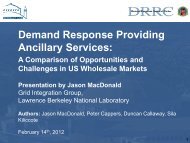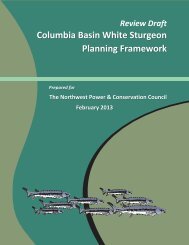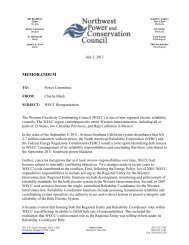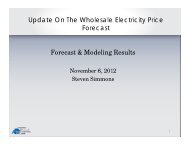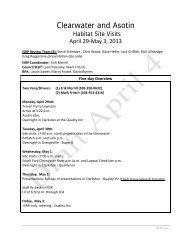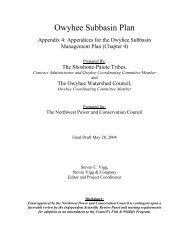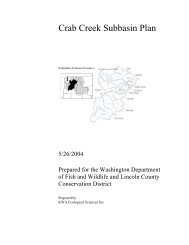Fuel Price Forecast - Northwest Power & Conservation Council
Fuel Price Forecast - Northwest Power & Conservation Council
Fuel Price Forecast - Northwest Power & Conservation Council
Create successful ePaper yourself
Turn your PDF publications into a flip-book with our unique Google optimized e-Paper software.
Appendix A: <strong>Fuel</strong> <strong>Price</strong> <strong>Forecast</strong><br />
Sixth <strong>Power</strong> Plan<br />
<strong>Forecast</strong>ing future fuel prices is particularly difficult following large changes in markets, which<br />
is the case with the natural gas market since 2000. It requires sorting out temporary influences<br />
from longer-term factors that are expected to persist into the future. For example, regulation of<br />
natural gas supplies dampened the supply response to the growing demand for natural gas in the<br />
early 1980s, leading to rapid price escalation. Regulatory incentives to find new natural gas<br />
supplies, but not increase production from existing supplies, resulted in a slow supply response,<br />
but also created large new supplies in the longer term. When natural gas was deregulated in the<br />
late 1980s, prices collapsed due to the so-called “gas bubble” and remained low throughout the<br />
1990s. During this time, low prices were expected to continue for many years and estimates of<br />
the cost of finding new natural gas were low.<br />
By the end of the 1990s, the more permanent effects of deregulated natural gas supplies were<br />
becoming clear. Companies no longer held large inventories of proven reserves and as excess<br />
reserves declined, prices became more volatile. This volatility was exacerbated by the<br />
development of spot and futures trading markets. Without significant changes to natural gas<br />
market regulation, this volatility is expected to be a long-term feature of these markets. As noted<br />
earlier, that volatility is reflected in the <strong>Council</strong>’s <strong>Power</strong> Plan, but this forecast addresses only a<br />
range of long-term price trends around which such volatility will occur. For example, the<br />
portfolio model includes short periods of time where prices can substantially exceed the high<br />
trend price forecast.<br />
It is important to understand that the collapse of prices in the late 1980s was not all due to a<br />
supply bubble; there was also a significant reduction in natural gas use. During the two decades<br />
prior to 1970, natural gas use had grown rapidly as supplies expanded and natural gas pipeline<br />
expansion made the supplies available to users. However, as natural gas prices escalated during<br />
the 1970s (more than quadrupling), demand for natural gas dropped precipitously. Similarly, as<br />
prices dropped following deregulation and remained low during the 1990s, demand grew, but<br />
failed to return to its previous 1973 high level until 1995. Figure A-2 shows these patterns. Also<br />
evident in Figure A-2 is the moderating effect of recent natural gas price increases on natural gas<br />
use since 2000.<br />
A-4



